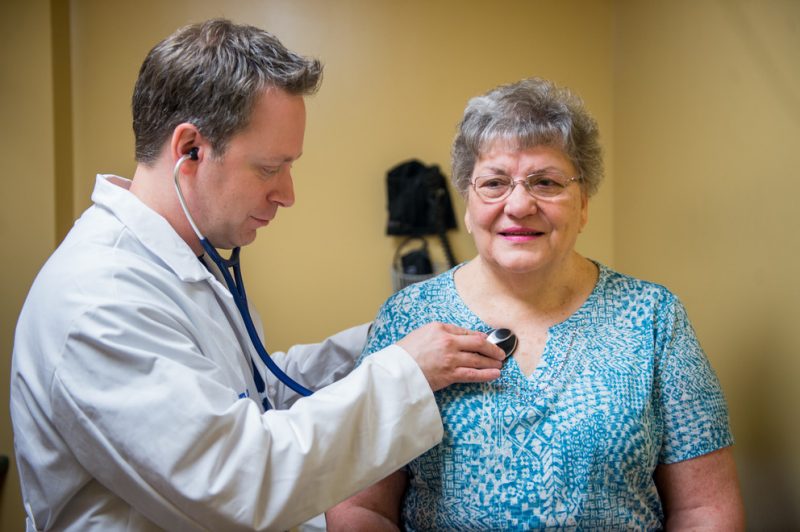One of the most common problems cardiologists handle is atrial fibrillation, also called AFib or AF. AFib is an abnormal or irregular heartbeat that can lead to blood clots, stroke, heart failure and other heart-related complications.
As many as 6 million people in the United States and 33 million people worldwide have AFib, the exact cause of which is generally unknown. As people age, they are more likely to have AFib. The prevailing theory is that age-related changes in the heart – tissue changes called fibrosis – produce the arrhythmia. A genetic component is likely.
“I look at AFib as an iceberg,” said Dr. Christopher Rogers, a cardiologist at Penn State Health Medical Group ? Berks Cardiology. “We understand the small part above the water, but the part below is much larger, and we have yet to understand it. I hope in my career we will continue to see advancements in understanding and treating this condition.”
What is known, Rogers said, is that AFib is more prevalent among Caucasians than Hispanics or African-Americans and more frequent in men than women. And while Hispanics have more risk factors for cardiovascular disease, such as diabetes and obesity, they tend to develop AFib less frequently.
AFib symptoms may include heart palpitations, shortness of breath, dizziness and fatigue. Risk factors include high blood pressure, obstructive sleep apnea, obesity, tobacco and alcohol abuse and uncontrolled diabetes.
“Once the genie is out of the bottle, you can’t stuff it back in,” Rogers said. “AF is very frustrating for the patient and physician to take care of. While there is no cure, we can manage the symptoms and do certain things to treat it.”
Rogers said working together means finding the best path to care. “What’s most important is protecting the patient from having a stroke and controlling their heart rate. Stroke as a result of AFib is the largest problem, and determining a patient’s stroke risks is essential.”
When a patient comes into the office with AFib symptoms, Rogers and his colleagues perform a cardiac workup, which includes a physical, electrocardiogram and ultrasound of the heart.
Treatment options for symptoms range from heart rate and rhythm control medications to cardiac ablation, a procedure to remodel heart tissue that allows incorrect electrical signals to cause an abnormal heart rhythm.
“Our society wants a quick fix for complex problems,” Rogers said. “AF is not a condition that we can simply cure. It takes multiple approaches and perseverance to treat an individual appropriately.”
Adopting a healthy lifestyle can prevent heart disease and AF, Rogers said. “People aren’t doing the things they need to do to control risk factors.” He suggests exercise, a healthy diet, weight control, avoiding caffeine or other stimulants and managing high blood pressure and cholesterol.
“I try to do a lot of individual education with my patients,” Rogers said. “I will spend whatever time it takes for them to become comfortable with me and understand their disease process so that we have a good relationship and can tackle the problem together.”
Related Content:
- The Medical Minute: Ensuring heart valve health
- The Medical Minute: Understanding high blood pressure helps avoid complications
- The Medical Minute: Detecting the subtle signs of heart disease in women
The Medical Minute is a weekly health news feature produced by Penn State Health. Articles feature the expertise of faculty, physicians and staff, and are designed to offer timely, relevant health information of interest to a broad audience.
